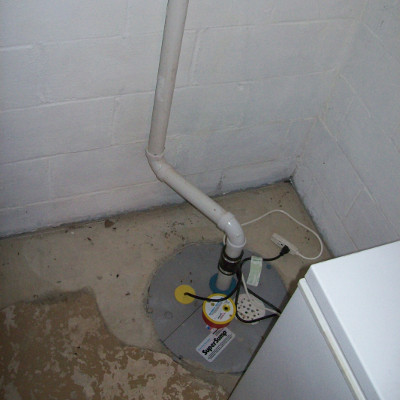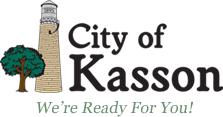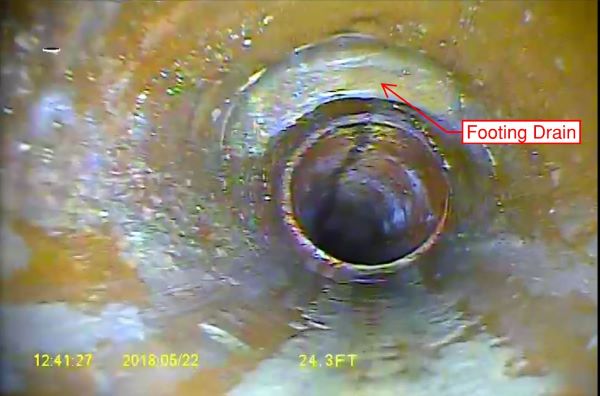Health and Safety Practices
We take the health and safety of the public, City, and consultant staff seriously, and will be implementing the following precautions to conform to CDC guidelines for COVID-19 (coronavirus) best safety practices:
- We will wear masks into all homes for inspection.
- We will take temperatures of our inspectors each day.
- We will eliminate the signature at the end of the inspection to make it contactless.
We request that residents do the following:
- We request that no more than 1 person accompany us during inspection.
- We request that person maintain a distance of 6’ from our inspector.
- We request that the resident also wear a mask.
By scheduling an inspection, you are indicating that no one in the household has had symptoms or a positive COVID test. You may reschedule to postpone the inspection if this changes.
About Inflow and Infiltration (I/I)
The sanitary sewer system in your community was designed to convey domestic and commercial wastewater to the wastewater treatment plant, where pollutants and wastes are removed before the water is discharged to the environment. On the other hand, rain water and ground water, called 'clear water', typically does not need to be treated. Clear water should go to the ground surface or storm sewer and flow into receiving streams and lakes. Clear water should not go into the sanitary sewer.
Excess clear water in the sanitary sewer collection system leads to unnecessarily high flows in the sanitary sewer. These high flows can result in basement sewage backups, bypassing of untreated wastewater into receiving streams, or increased taxpayer costs to construct and maintain a larger-than-necessary collection system.
The City engages in regular maintenance to correct cracks and other defects in pipes and manholes to reduce clear water infiltration into the sanitary sewer collection system. However, a major source of clear water is generally on private property: clear water that is collected by roof drains, sump pumps, seepage collection systems ("beaver drains") and footing drains.
A few sump pumps or footing drains improperly connected to the sanitary sewer make a significant difference to a community's collection system. A typical sanitary sewer pipe in a residential neighborhood is an 8" diameter pipe with a typical capacity of 350 gallons per minute (gpm). This is plenty of capacity if only domestic wastewater entered the pipe. However, add a few sump pumps that can discharge between 20 - 100 gpm each, and the pipe could quickly become overloaded, potentially leading to backups in that neighborhood.
The City of Kasson, through its consultant WHKS & Co., will be conducting sump pump and lateral inspections to verify that sump pumps, roof drains, and other clear water sources are not connected to the sanitary sewer system.
The goal of this program is to remove clear water from the sanitary sewer collection system, which will reduce the potential for sanitary sewer backups, improve public health, and extend the service life of the sanitary sewer collection system and treatment plant, which can ultimately lead to lower taxpayer costs.
Additional I/I Handouts and Information
- Metropolitan Council Website - Reduce Inflow and Infiltration (I/I)
- Handout - Additional I/I information
- For more information go to the Notice page
About the Inspections
Timeframe: The entire City of Kasson will be inspected in 2020 and 2022. All buildings with sewer accounts (approximately 2,400 buildings) will be inspected.
The City will be separated into sectors, designated by a color to stagger inspection times throughout 2020 and 2021. Generally, the program will start with lateral and sump inspection areas (Sectors red, yellow, green, turquoise). MAP
Scheduled Appointments: To ensure resident safety, all inspections will be scheduled. No door-to-door inspections will be conducted. Inspections will be completed between the hours of 7:00 am and 7:00 pm.
Web or Telephone: Both a telephone number and a web based option are available for ease of appointment scheduling. The secure web-based scheduling system allows residents to schedule an appointment. Residents who do not want to use the Internet can still call our toll free telephone number to schedule an appointment.
Identification of Inspectors: WHKS inspectors will be wearing an identification badge with the WHKS and City logos, as well as WHKS clothing and vehicles. If you have any questions on the identity of the inspectors, please feel free to contact us.
Health and safety practices: See above.
The Inspection
There are two type of inspections being completed, sump inspection and lateral inspection. The lateral inspection includes a sump inspection. There must be an adult occupant present during all inspections. Typical inspection process is below.
The Sump Inspection: A typical sump inspection is completed in under 15 minutes. The sump inspection will consist of observing five items:
- Exterior Grading: Does exterior grading slope towards the building?
- Roof Drains: Are there roof drain downspouts that go into the ground?
- Basement: Is there a basement?
- Seepage Collection System (Beaver System): Is there a seepage collection system? If present, does it discharge into a sump pit (proper) or the floor drain (improper)?
- Sump Pit/Sump Pump: Is there a sump pump? If present, does it discharge outside the basement through rigid pipe (proper), discharge to the floor drain (improper), or discharge to either location through a flexible hose (improper).
The Lateral Inspection: The lateral inspection will be in addition to the required sump inspection and is required for buildings built before the year 2000. The entire inspection (sump and lateral inspection) is typically completed in under 30 mins. The inspection is done by a sewer camera inserted into the service lateral. Using the camera, the additional lateral inspection observations are as follows:
- Pipe Information: What is the size and material of the service lateral?
- Observations: Are there any roots, mineral deposits, cracked pipes, offset joints, or sags in the service lateral?
- Suspect Foundation Drains: Is there a footing drain connection? If yes, where is the footing drain?
If an improper connection is found, the inspector will give a Violation Notice to the occupant and explain the necessary steps and timeframe for correction. A reinspection must then be scheduled and conducted to verify that the correction has been made.
| Improper connection: Flexible Hose | Proper connection: Rigid Discharge Pipe To Exterior. |
 |
 |
Improper Connection: Footing Drain

